Over a period of years, I have been working on programming a 3D graphics program. Having reached a certain level with it I was pleased with what I had achieved, but I did not feel I had exploited it or really shown off what it could do. In 2020 I attempted to use my program to create a 3D model of a human body. This was quite a step up from the cubes, spheres and other geometric shapes I had previously modelled, and it took some time and effort. The resulting program allowed me to pose the figure however I wanted, then light and render it using ray-tracing.
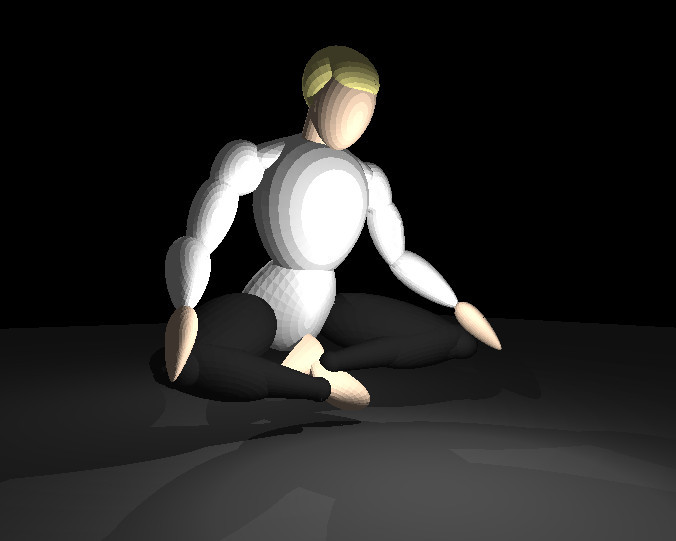
The end goal of my efforts was to produce a model that would be able to assist me in my carving by allowing me to visualise the human form in 3D in whatever pose I required. I have recently used my 3D model to help me produce designs for the carving 'Casual Statuesque'.
A traditional artist's mannequin proved insufficient for representing my initial sketch. A modern mannequin (designed principally for Manga drawings) is much more flexible and representative of the human form, but still rather limited.
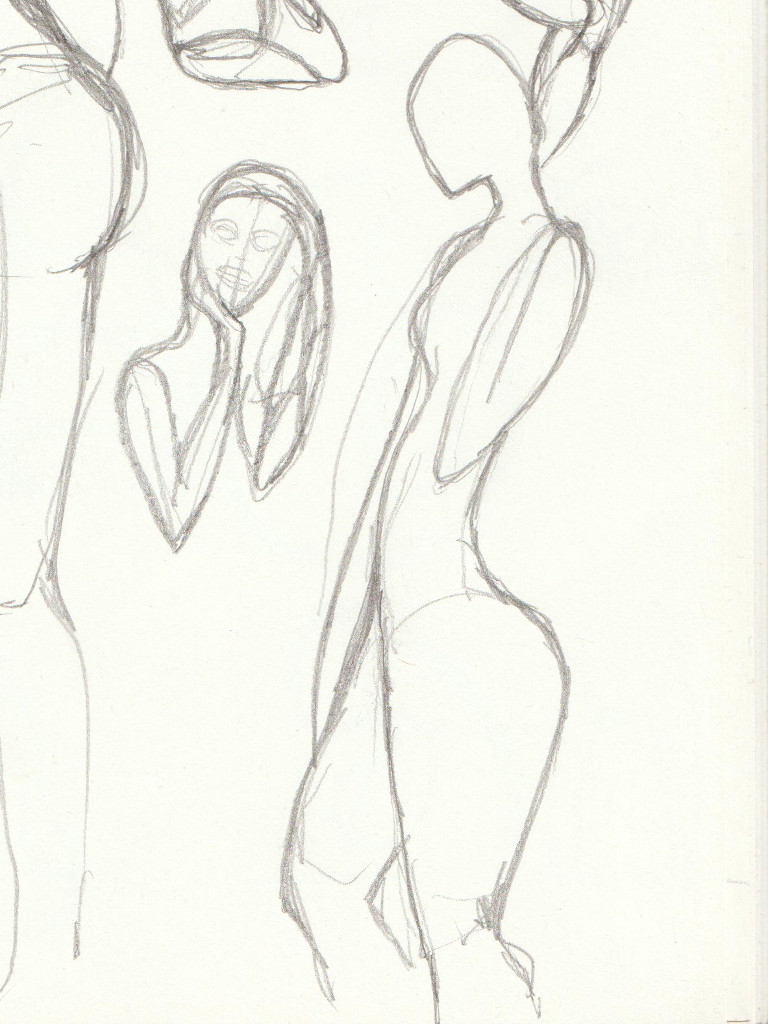
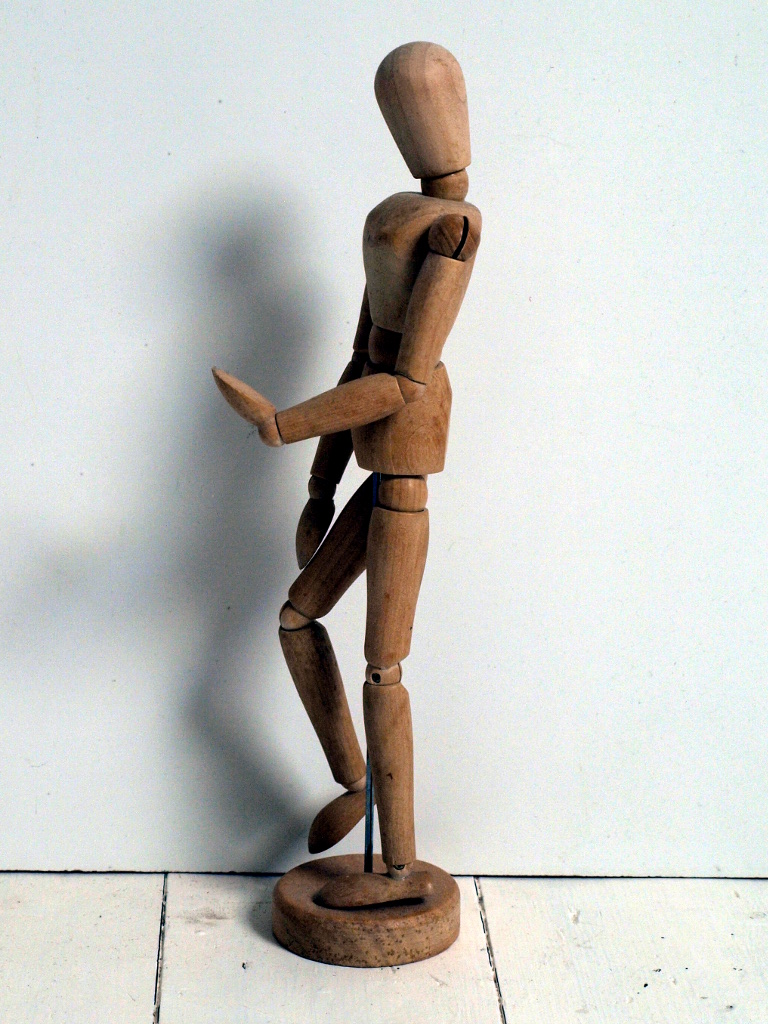
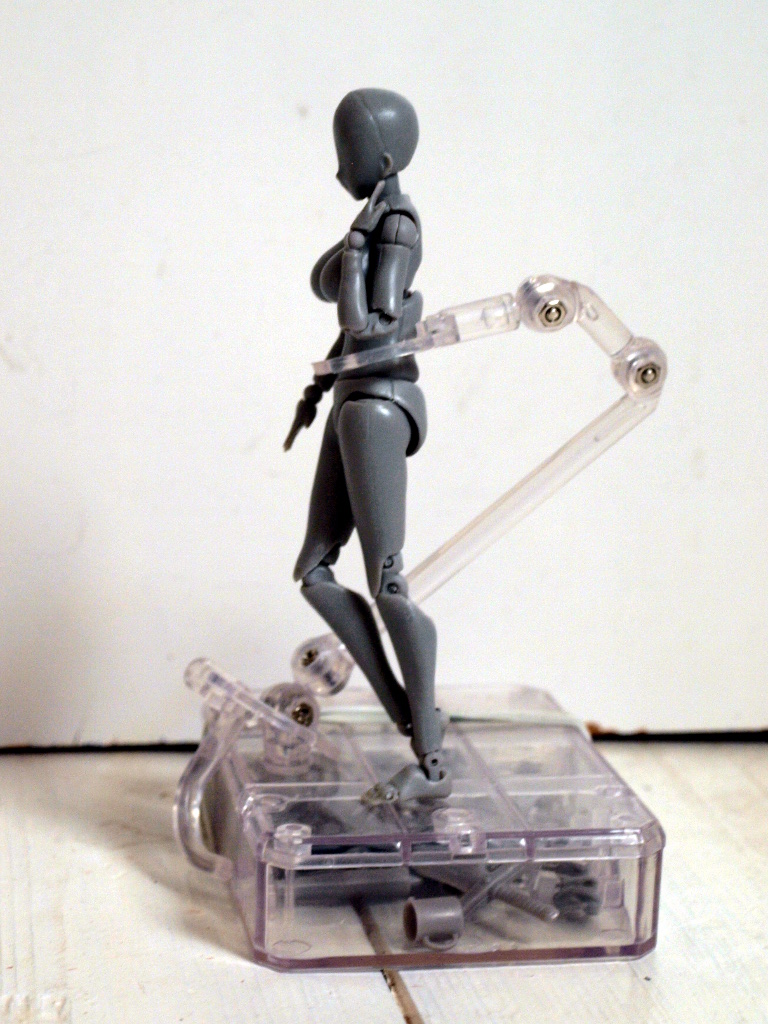
By approximating the pose from the sketch in my 3D modelling program, I was able to produce a set of orthographic projection images showing the pose from multiple angles. The shading here does not use ray-tracing - it is a basic representation of the angles of faces in order to give a sense of depth.
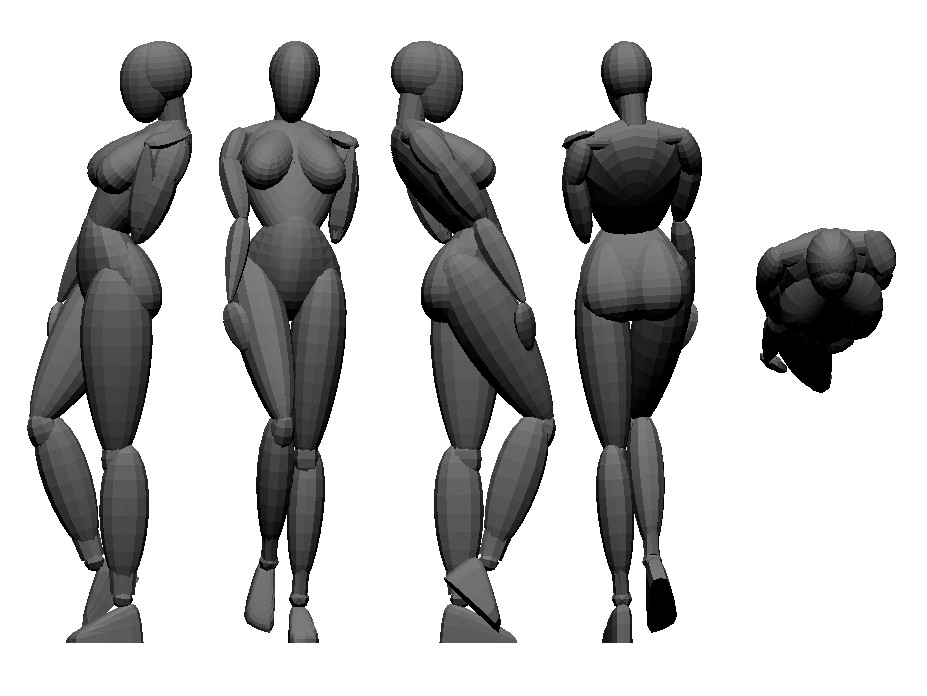
On top of these images (in fact the wireframe versions) I was able to resketch my original deisgn from the multiple angles. I then used these additional sketches to produce designs that I could cut out to use as templates.
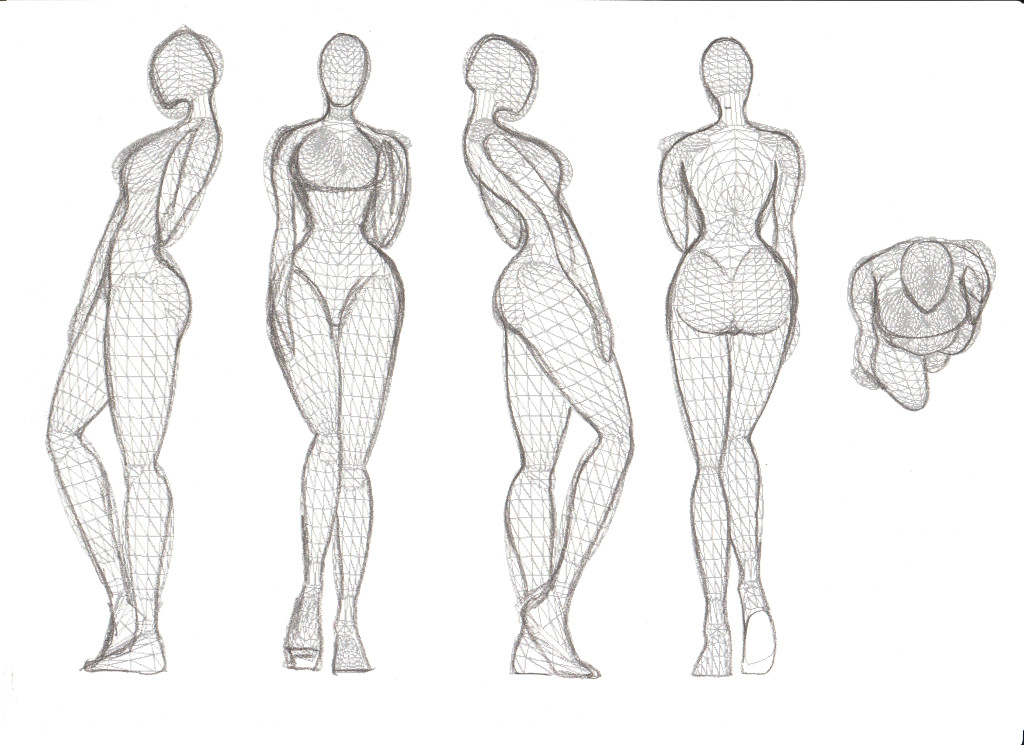
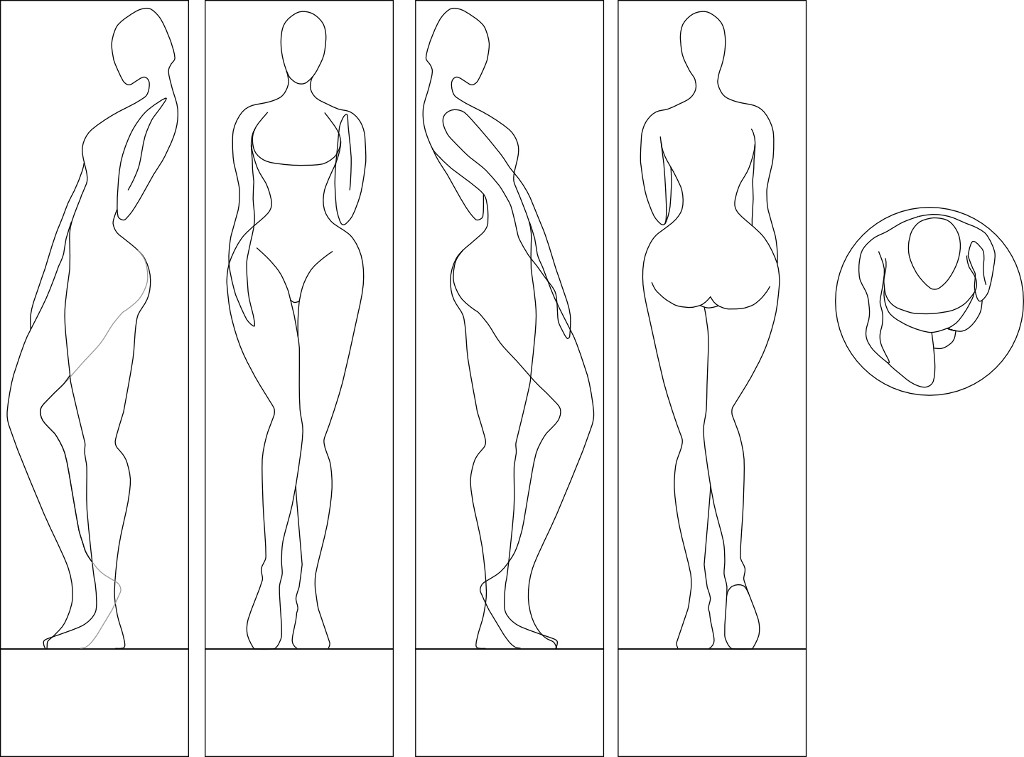
I used these templates to draw my design onto the wood. I continued to use the templates throughout the carving process, as well as referring to the shaded images.
This is the final piece: